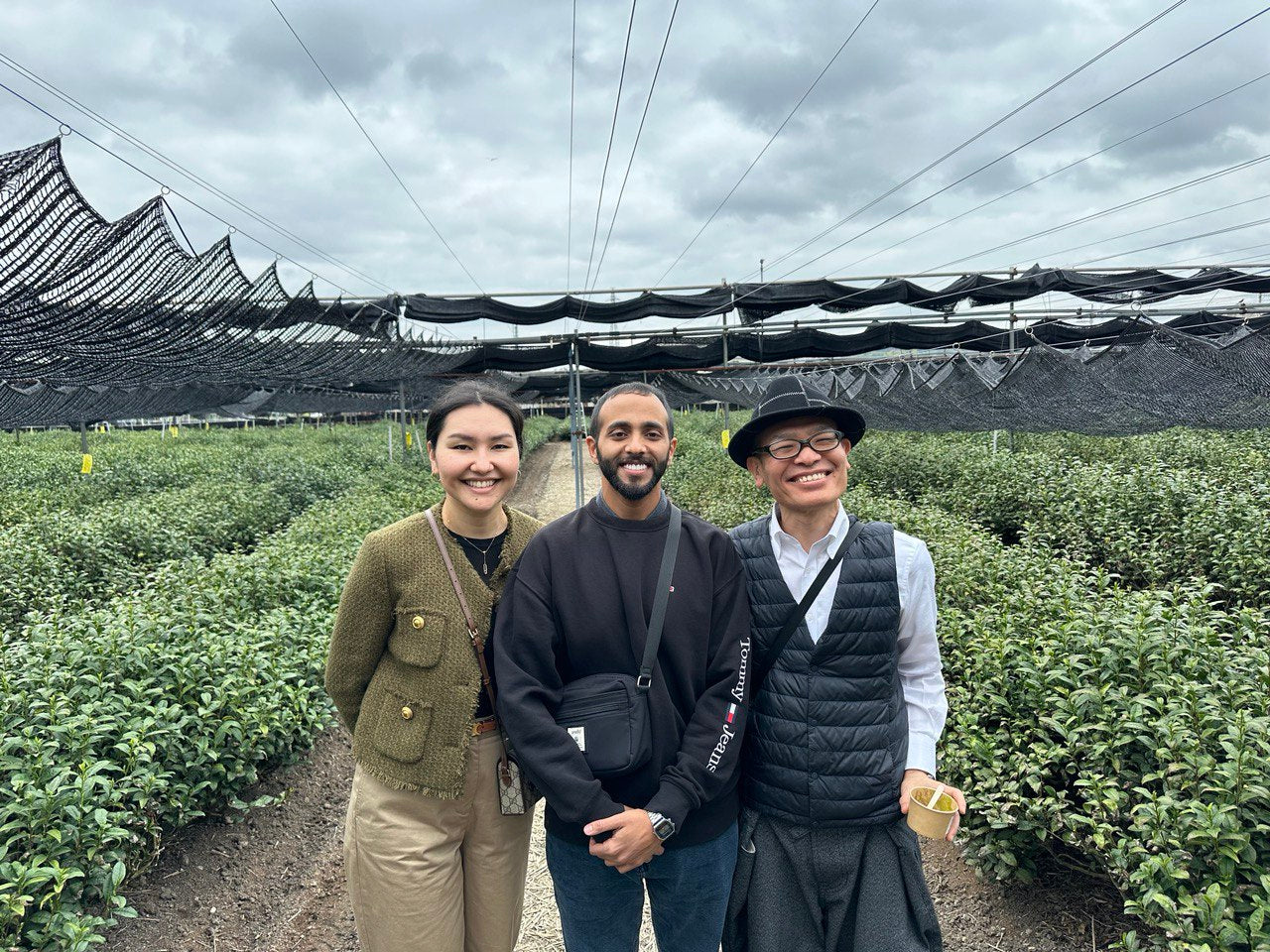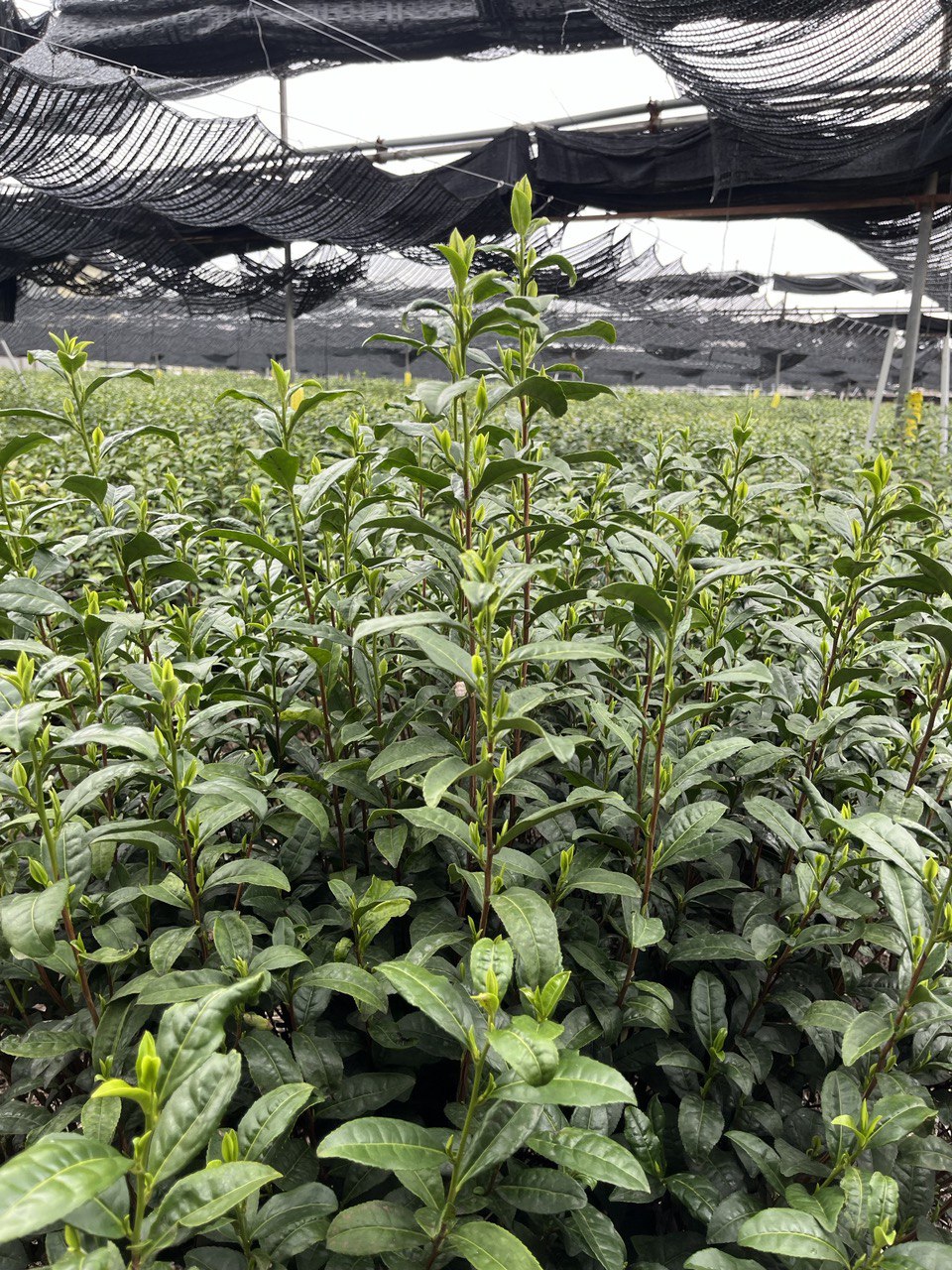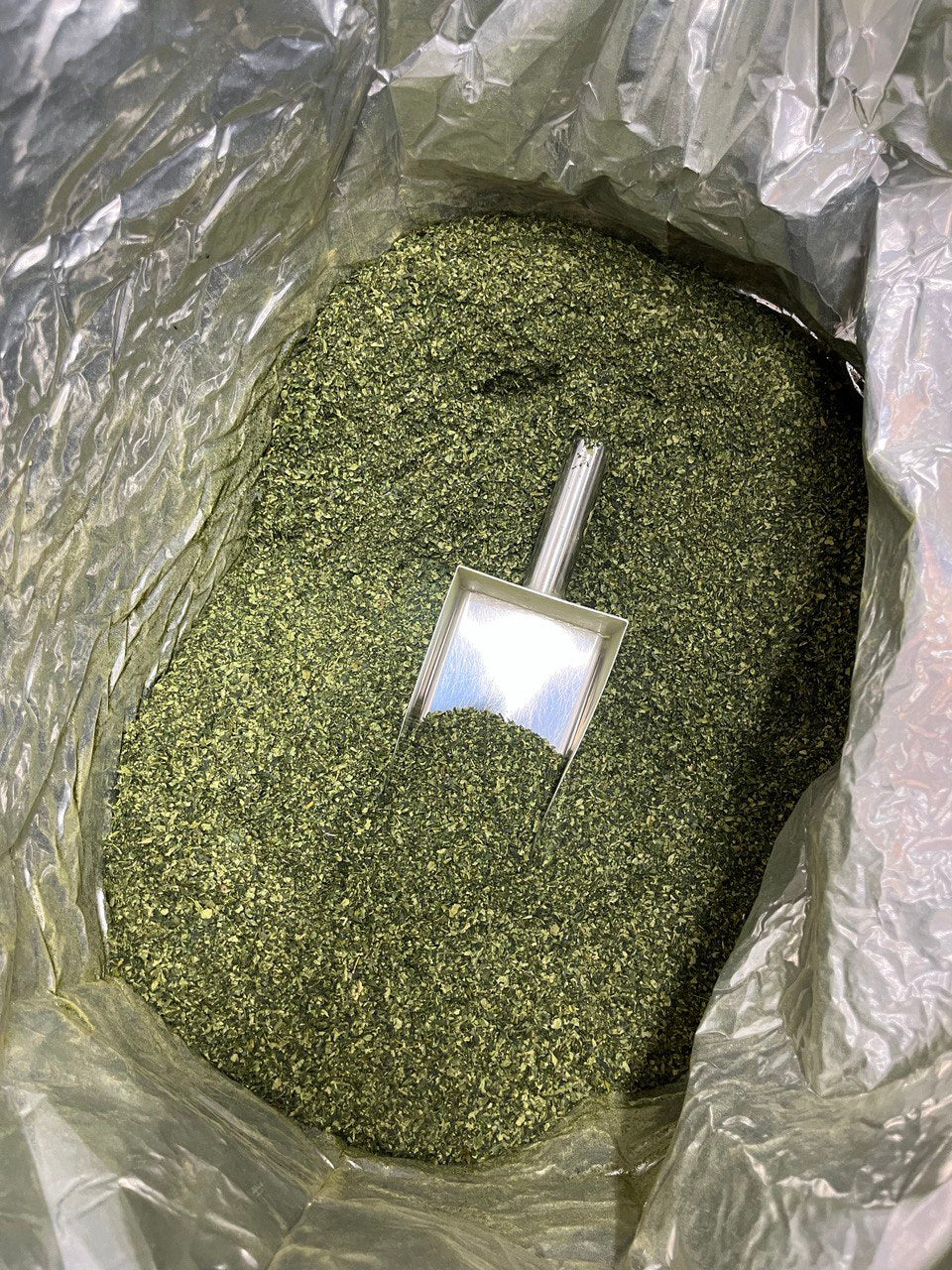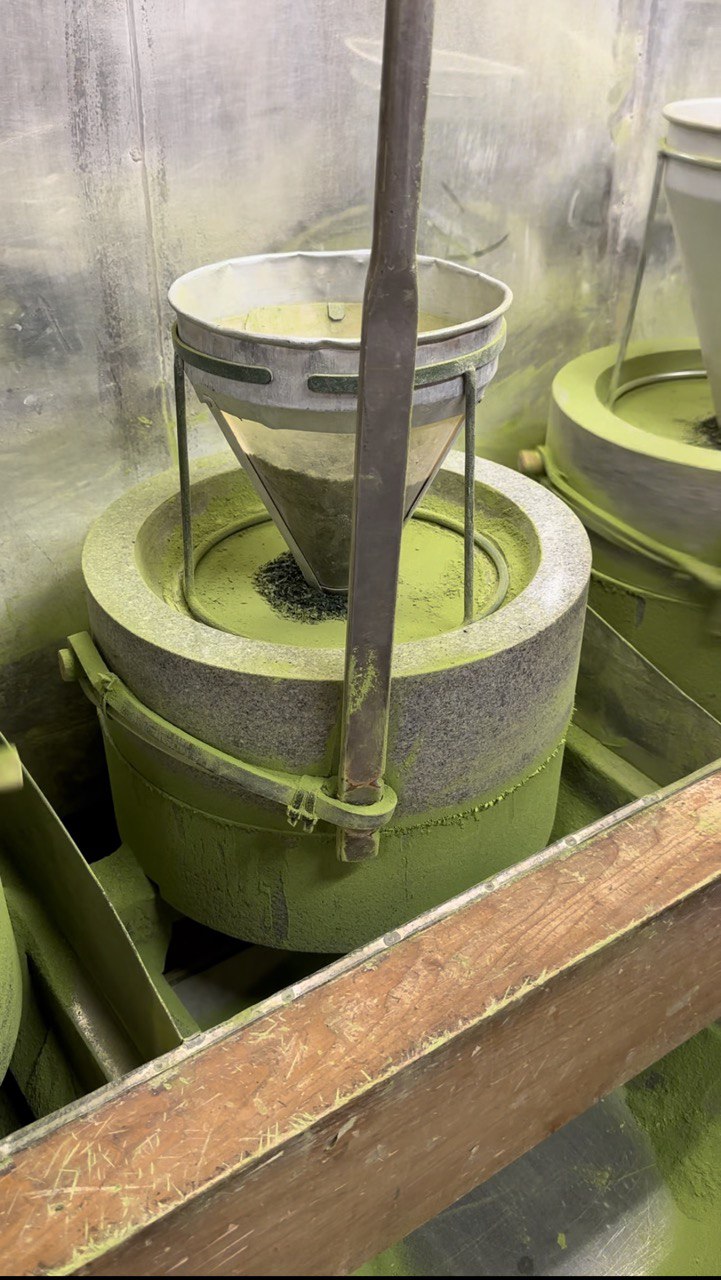Our Matcha

📍 Uji, Japan 🇯🇵
Our matcha comes from a family farm in Uju, Kyoto, Japan. Our founders took a trip to meet with the farm owners and see the production facilities to ensure the quality of match delivered to you. Here is more of what we've learned:

Camellia Sinensis
Matcha is cultivated from the tea plant known as Camellia Sinensis. The plant is shade-grown for several weeks. The future taste (bitterness or lack of it) of matcha depends on how well was the plant shaded. It's difficult for Camellia Sinensis to grow if it does not receive any sunlight, but if it got too much sun, the taste of matcha will be bitter. Proper shading also heightens matcha's chlorophyll production which is responsible for the bright green color of your favorite drink.

Tencha
Only the young leaves of the shade-grown Camellia Sinensis are hand-picked for matcha production.
Once harvested, the leaves are given a steaming treatment within hours of being plucked. This oxidation process brings out more of the vibrant green coloring for matcha.
After steaming, the leaves are laid flat to dry. The dry leaves are called tencha. In tencha, hard parts such as stems and veins are removed from the tea leaves to achieve a smooth and consistent texture in the matcha powder.

Matcha powder
Tencha then is stone-ground in traditional Japanese slow-turning stone mills producing fine matcha powder. If the mills speed is set too high, the powder will be chinky causing bitterness and clots in your drink. Thus, the stone-grinding takes a long time to ensure that the powder is as smooth as possible.
As you can see, growing Camellia Sinensis, picking the leaves, steaming, drying and stone-grounding - all requires delicate, meticulous hand work and patience.